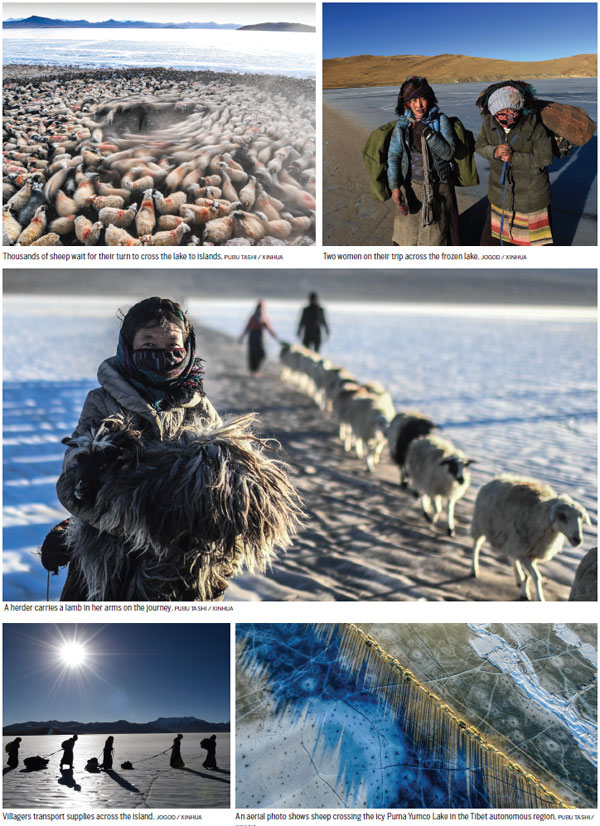Taking an icy path to pastures new

Though the ice can reach a meter thick and is as hard as rock, the herders take every precaution to ensure a safe crossing.
"The older and better experienced men walk on the ice and mark a path they deem safe. Then the women in our village carry stove ashes and spread them on the ice to make a safe path," Cering said.
"We need to move the sheep fast. The earlier we set foot on land, the better."
As the flock moved forward, the icy surface groaned under their enormous weight - plateau sheep weigh many kilograms and are valuable, selling for at least $100 each.
Some sheep dared not move on the ice and Cering had to force them forward. When smaller animals wandered off or fell, the herders picked them up in their arms.
It took more than two hours to complete the three-kilometer journey across the frozen lake.
Halfway across, the sun rose and Cering quickly started to whip the herd onward.
"We drive the sheep forward, and the sun drives us forward. We need to quicken our steps before it gets warm," he said.
Meanwhile, Yeshe Wangyel, a monk in a local monastery, prayed for a safe and smooth crossing for the herders and their sheep.
"When I was young, I also herded sheep across the lake. It was so cold, and we were afraid that the ice would crack. There were some heart-stopping moments, but as far as I can remember there were no accidents," he said.
















